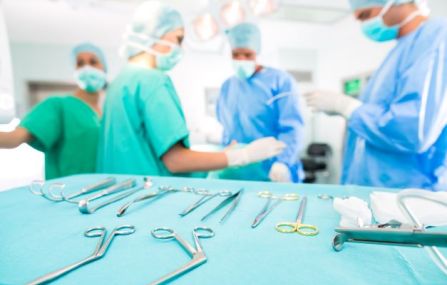 Duna Medical Center's brand new hospital is equipped with the most modern surgical infrastructure, equipment, and instrument park available in Hungarian healthcare. Our surgeons are assisted by a special high-resolution 3D camera and monitor system used for laparoscopic surgical procedures.
Duna Medical Center's brand new hospital is equipped with the most modern surgical infrastructure, equipment, and instrument park available in Hungarian healthcare. Our surgeons are assisted by a special high-resolution 3D camera and monitor system used for laparoscopic surgical procedures.
Removal of Pilonidal Cyst (cysta pilonidalis, sinus pilonidalis, dermoid cyst)
The disorder is caused by a disturbance in hair growth, primarily - but not exclusively - occurs in men, and typically develops between the buttocks, above the sacrum or tailbone.
Formation of a Pilonidal Cyst
If for some reason - for example, due to the increased pressure of a sedentary lifestyle - the hair cannot penetrate the skin surface, they grow deep in the subcutaneous fat. Glands that produce sebum and sweat operate in the hair follicles, and their secretion cannot be expelled towards the skin surface, so it accumulates deep down, in the form of a nodule, beside the growing hairball.
If the secretion finds a way in the skin in the form of tiny fistulas, occasionally serous, purulent secretion may reach the surface, contaminating the underwear. However, most often this subcutaneous accumulation gets infected and appears as an extremely painful, tensioning abscess. Most patients first seek medical attention with this symptom.
Treatment of Pilonidal Abscess
If the abscess has developed, an urgent surgical consultation and subsequent surgery are required. Since the inflammatory accumulation cannot break through the thick skin, it spreads in the surrounding loose fat tissue of the buttock area, destroying a larger area from day to day. Therefore, we open the abscess under local anesthesia or short anesthesia, so that the pus can drain. We treat the wound open for the next few weeks until the inflammation recedes, the wound cavity clears up, and the secretion stops. The skin wound heals secondarily.
After opening the abscess, the patient first has to go for wound dressing daily, later every two or three days. The healing time can be as long as 4-6 weeks.
In a fortunate case, the hairball causing the inflammation may also leave with the drained pus, and permanent healing can be expected. However, most often the hairball remains deep down, so recurrence of secretion and abscess can be expected later.
Treatment of Persistently Existing Fistula
If after opening the abscess the inflamed, painful lump does not reappear, a painless, non-inflammatory, secreting fistula may occur, which can form an extensive subcutaneous passage system over the years. In this case, surgical excision of the area can provide a permanent solution.
Several surgical solutions are possible, each involving the complete excision of the entire fistula system, and the surgeon always suggests the most appropriate intervention for the given case and the given patient.
At Duna Medical Center, we primarily recommend complete excision and subsequent wound closure for our patients. In successful cases, rapid healing can be expected, but unfortunately, in 20-30% of cases, wound infection or wound separation may occur, when we need to open the wound and switch to open wound treatment (see later).
In certain cases, extensive fistulas, recurrent processes may require various plastic methods, flap formations for the coverage of the excised area.
In case of small fistulas, phenol solution treatment can also be tried, and laser treatment can be successful for simple fistulas.
The other possible surgical method is to excise the fistulating skin surface, remove the patient areas, and leave the wound open for secondary wound healing, so-called sprouting. To shorten wound healing, the skin at the edge of the wound cavity is usually "pouched" to the wound base, which slightly shortens the healing time. However, extensive wound treatment must be prepared for, which can be somewhat accelerated with new, innovative dressings.
The open treatment takes about 3-4 weeks on average, dressing requires assistance, but permanent healing can be expected with good odds. This type of wound healing comes with secretion, wearing a sanitary pad is recommended for the entire duration of healing. The total healing time is about 4-6 weeks, physical relief is necessary during this time.
